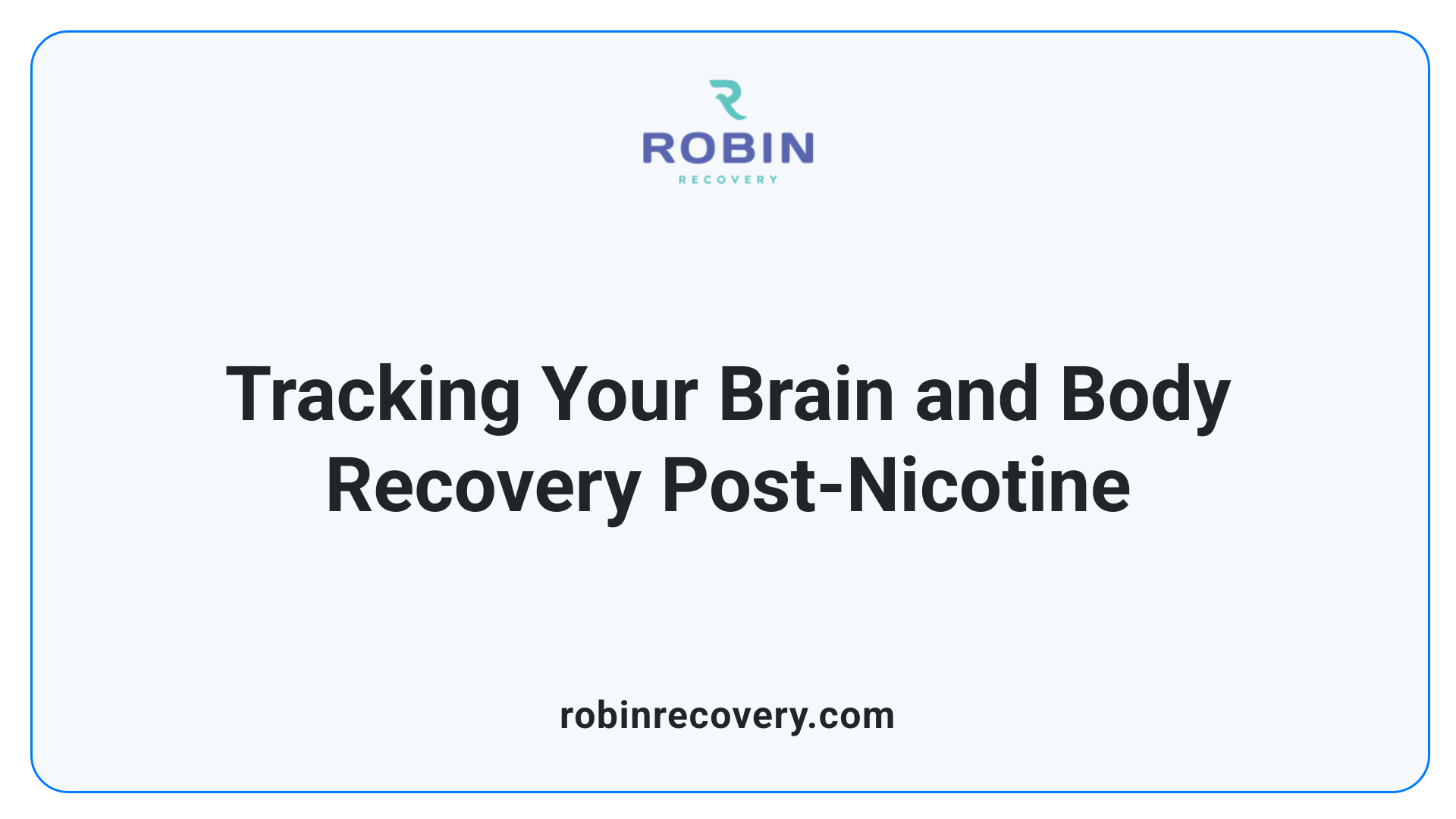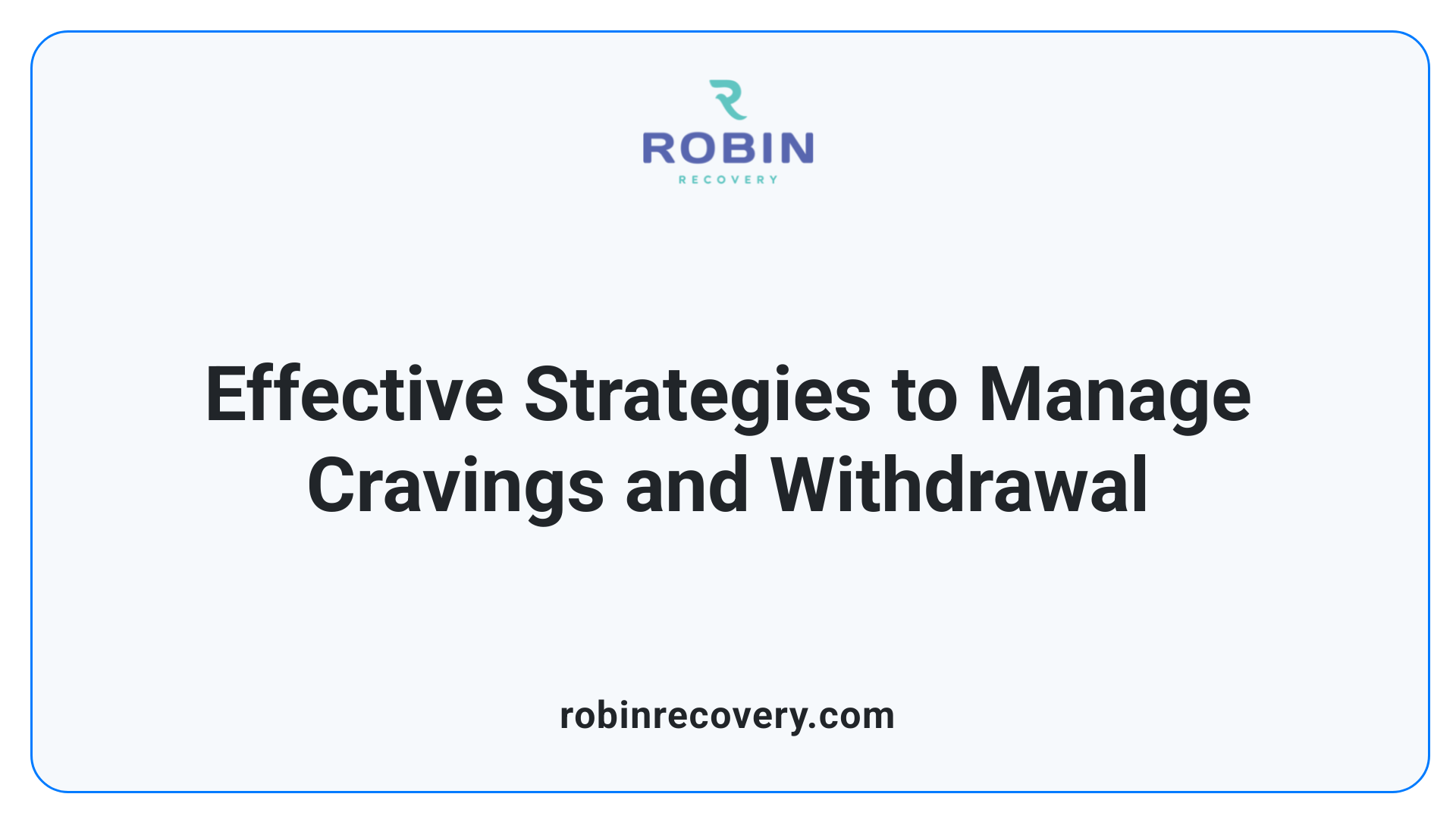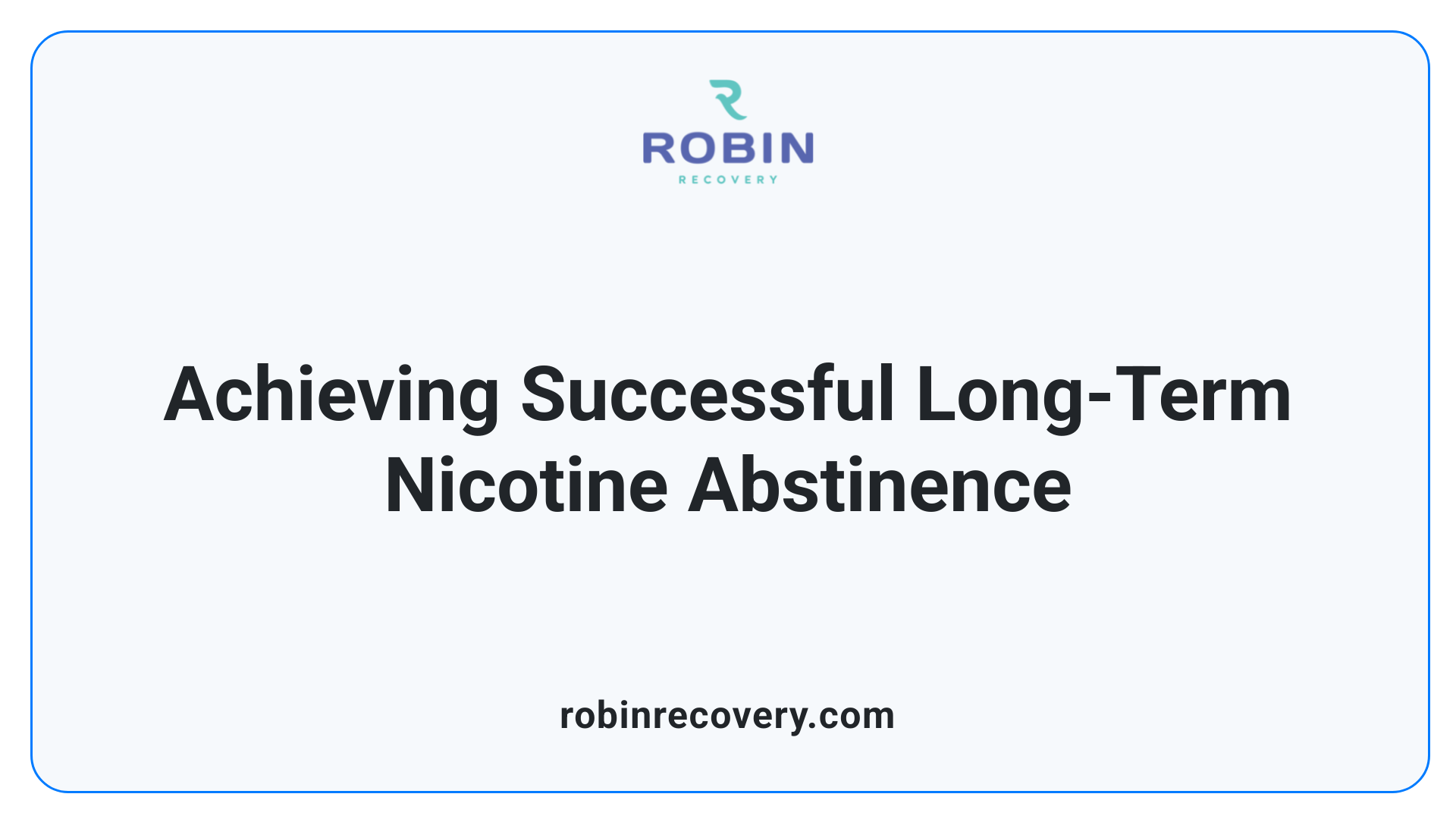How Long Does It Take to Break a Nicotine Addiction

A Comprehensive Guide to Breaking Nicotine Dependence
Nicotine addiction is a powerful psychological and physiological dependence that challenges many individuals seeking to quit smoking or vaping. While the journey varies for each person, understanding the typical timeline of withdrawal symptoms, brain recovery, and effective strategies can help increase the chances of success. This article explores how long it generally takes to break a nicotine habit, what to expect during withdrawal, and how to support recovery for lasting health benefits.
Initial Withdrawal and Physical Symptoms

When do nicotine withdrawal symptoms start after quitting vaping or smoking?
Withdrawal symptoms typically begin within a few hours to 24 hours after the last use of nicotine. For many, cravings and physical effects such as increased appetite or irritability can start as early as 30 minutes post-cessation, with symptoms often peaking around the second or third day.
What physical effects occur in the first days of quitting?
In the initial days, individuals may experience a variety of physical symptoms, including headaches, dizziness, fatigue, dry throat, cough, and constipation. These symptoms are signs that the body is beginning to recover from nicotine addiction. Notably, headaches often occur within the first two days, while increased appetite and cravings can appear as early as 30 minutes after cessation.
When do symptoms reach their worst during the first week?
The first week after quitting is usually the most challenging. Symptoms such as irritability, intense cravings, sleep disturbances, and mood swings tend to be at their peak between days 3-5. This period marks the height of physical and mental withdrawal, making it crucial for individuals to have support and strategies in place to manage these symptoms.
How long do withdrawal symptoms last?
Most physical symptoms tend to diminish significantly within 2 to 4 weeks. Headaches, cough, and fatigue typically improve during this period. However, some psychological effects—including cravings, irritability, and emotional lows—can persist longer, sometimes even for several months.
How do symptoms progress after the first week?
By the end of the second week, cravings generally decrease in intensity, and most physical effects like headaches and cough lessen. Many individuals report feeling clearer, with mood and energy levels beginning to stabilize. The third and fourth weeks usually see further reduction in withdrawal signs, but mental and emotional challenges related to craving habits may continue.
What is the recovery timeline for physical and mental symptoms?
Timeline Physical Symptoms Mental & Emotional Symptoms Additional Notes 4-24 hours Cravings, headaches, irritability begin Anxiety may start around day 3 Withdrawal symptoms start quickly and peak early 2-3 days Intense cravings, headaches Mood swings, difficulty concentrating Cravings tend to be strongest within this window 1 week Most physical symptoms reduce Irritability, sleep issues remain Physical symptoms usually lessen significantly 2-4 weeks Symptoms lessen significantly Cravings may persist but weaken Most physical effects resolve by this time 1-3 months Very few physical symptoms remain Anxiety, depression can linger Long-term mental health support may be needed
What is the long-term outlook regarding withdrawal and recovery?
While physical withdrawal symptoms tend to resolve within a month, mental and emotional effects—such as cravings, irritability, and low mood—can persist for several months. Success in quitting highly depends on support strategies like nicotine replacement therapy, behavioral counseling, and avoiding triggers. Most individuals find that over time, the intensity of cravings diminishes, making abstinence more manageable.
Additional strategies to manage withdrawal symptoms
- Use nicotine replacement therapies (patches, gum, lozenges) as prescribed.
- Maintain good hydration and sleep hygiene.
- Engage in regular physical activity.
- Seek support from friends, family, or support groups.
- Employ mindfulness and relaxation techniques.
- Avoid triggers associated with smoking or vaping.
This comprehensive approach helps to ease the challenging first weeks and paves the way for long-term success in quitting nicotine. Overall, understanding the timeline and managing expectations can empower individuals to overcome withdrawal symptoms effectively.
The Timeline of Brain and Body Recovery

How long does it take the brain to recover from nicotine addiction?
The process of neural recovery after quitting nicotine is gradual. In the initial weeks following cessation, the brain begins to adjust as dopamine production and receptor activity start to normalize. This period is marked by the resolution of many immediate withdrawal symptoms such as irritability, cravings, and difficulty concentrating.
However, complete neural recovery and full normalization of the brain's chemical balance can take considerably longer. It often spans several months to even years. During this time, the brain re-establishes its normal functions, reducing dependency and diminishing the psychological grip that nicotine once had.
Research indicates that while initial signs of recovery are visible within a few weeks, the intricate process of restoring neural pathways can extend beyond a year, especially in individuals with long histories of heavy use. The brain gradually recalibrates neurotransmitter systems, like dopamine, which nicotine initially hijacks to produce pleasurable feelings.
Time for cognitive and emotional recovery
Cognitive functions such as focus, memory, and decision-making often see improvements within the first few weeks to months after quitting. Emotional stability, however, can be more elusive. Many former users experience lingering feelings of anxiety, depression, and irritability, which can persist for months.
During the first three to four weeks, emotional fluctuations are common as the brain continues to adapt to the absence of nicotine. As the neural receptors stabilize, these symptoms tend to lessen. Nonetheless, for some, emotional challenges—such as low mood and anxiety—may continue beyond this period, requiring additional support, such as counseling or behavioral therapies.
Longest periods of psychological effects
While physical withdrawal symptoms, like headaches, cough, and fatigue, typically resolve within a month or two, psychological and behavioral symptoms can persist longer.
Cravings, in particular, may linger months or even years after quitting. These are often triggered by environmental cues or stress, making relapse a risk even long after initial withdrawal symptoms have faded.
Studies show that stress, depression, and irritability can last beyond the physical withdrawal phase, sometimes extending up to several months or more. This prolonged psychological impact underscores the importance of ongoing support and behavioral strategies in maintaining long-term abstinence.
Typically, the most intense psychological challenges—such as cravings and mood swings—peak in the first one to two weeks. After that, they gradually diminish, but the risk of relapse remains higher during this period, emphasizing the need for resilience and support.
Time Frame Recovery Milestone Details Within hours Acute withdrawal begins Heart rate decreases, cravings start, irritability occurs 2-4 days Peak withdrawal symptoms Headaches, cravings, dizziness, sleep disturbances 1-4 weeks Physical symptoms lessen Cough decline, lung function begins improvement 1-3 months Emotional stabilization begins Mood swings decrease, cravings reduce significantly 3-6 months Neural circuits start to recalibrate Tolerance reduced, brain receptors normalize 6 months to 1 year Major neural adaptation visible Emotional resilience improves, reduction in psychological symptoms 1 year and beyond Full recovery of neural functions Risk of relapse reduces, longstanding mood and cognitive improvements
Managing Withdrawal Symptoms and Cravings Effectively

What strategies help manage cravings?
Managing cravings during nicotine withdrawal can be challenging, but several strategies have proven effective. Behavioral techniques such as distraction, physical activity, and mindfulness are highly recommended. For example, engaging in a quick walk, practicing deep breathing exercises, or focusing on a different activity can divert attention away from the urge to smoke or vape.
Nicotine replacement therapy (NRT) is another widely used method. Products like nicotine patches, gum, lozenges, nasal sprays, and inhalers provide measured doses of nicotine. This controlled delivery helps curb cravings and reduces withdrawal symptoms without exposing users to the harmful chemicals found in tobacco or e-cigarettes.
Support networks play a vital role as well. Involving friends, family, or support groups can furnish emotional encouragement and accountability. Many people find that counseling or professional behavioral support enhances their motivation and resilience, especially when facing psychological and emotional dependence.
How can I increase my chances of successful quitting?
Success in quitting nicotine depends significantly on comprehensive planning and support. Creating a detailed quit plan should include setting a specific quit date, identifying personal triggers, and preparing for potential challenges like social situations or stress.
Incorporating nicotine replacement therapy or medications such as bupropion or varenicline can effectively manage withdrawal symptoms and reduce the psychological drive to smoke or vape.
Behavioral support, including counseling and coaching, addresses emotional and behavioral aspects of addiction. These interventions can help develop coping strategies and reinforce motivation.
Furthermore, establishing a strong support system is critical. Friends, family, and healthcare professionals can provide ongoing encouragement and practical advice. Stress reduction techniques, such as meditation, deep breathing, or engaging in hobbies, also contribute to increasing the likelihood of success.
Combining these approaches—structured planning, pharmacological aids, behavioral techniques, and social support—creates a robust framework to overcome nicotine dependence and sustain long-term abstinence.
Aspect Description Additional Details Behavioral strategies Distraction, physical activity, mindfulness Help manage immediate urges and reduce emotional dependence Nicotine replacement Patches, gum, lozenges, nasal spray, inhalers Provide controlled nicotine doses to lessen withdrawal symptoms Support networks Friends, family, counseling, support groups Offer emotional backing and accountability Success improvement Quit plan, medication, behavioral support, stress techniques Enhances chances by addressing both physical and mental aspects
Understanding the complexity of nicotine withdrawal and employing a combination of these strategies significantly boosts your chances of successfully quitting and staying nicotine-free.
Health Benefits of Quitting Nicotine
What are the health benefits of quitting?
Quitting nicotine offers both immediate and long-term health advantages. Right after stopping, your heart rate and blood pressure decrease within just 20 minutes, which reduces the strain on your cardiovascular system. This initial improvement helps lower the risk of heart-related issues.
Within days to weeks, your lungs begin to recover. You may notice better breathing and a reduced cough as the lungs clear out mucus, tar, and dust. Also, your senses of taste and smell often improve noticeably after a week, making food more enjoyable.
Long-term benefits become increasingly evident over months and years. After about a year of being smoke-free, the risk of heart attack drops significantly, and the lungs' ability to remove mucus and dust increases. Additionally, the risk of developing lung cancer and other respiratory illnesses decreases.
As time progresses, the risks of heart disease, stroke, and many cancers are dramatically reduced. After 10 years without smoking, the chances of lung cancer are about half what they are for smokers. Moreover, risks for throat, mouth, and esophageal cancers decline as well.
Over several years, the body continues to repair and strengthen, making the individual healthier overall. Many chronic diseases linked to nicotine and tobacco use—such as cardiovascular diseases and respiratory conditions—become less severe, allowing for a better quality of life and longer lifespan.
Time Frame Improvements Underlying Benefits Additional Notes Immediate (minutes) Heart rate and blood pressure start to drop Reduced strain on the heart Effects begin within 20 minutes after quitting Days to weeks Breathing improves, senses of taste and smell enhance Better lung function, fewer respiratory irritations Cough and wheezing decrease 1 year Risk of heart attack drops to half that of smokers Significant reduction in cardiovascular disease risk Heart health improves steadily 5-10 years Risk of certain cancers approaches that of non-smokers Lowered lifetime risk of lung, mouth, throat, and esophageal cancers Long-term health outlook improves 10+ years Risk of lung cancer halved, risk of coronary heart disease nearly same as never smokers Marked decrease in mortality rates from chronic illnesses Overall lifespan increases
The positive health changes happen gradually, with many benefits accruing as you stay smoke-free longer. Therefore, the journey to better health is ongoing, with each year of abstinence bringing new rewards.
Withdrawal Duration and Factors Influencing It
When quitting nicotine — whether from smoking or vaping — the duration of withdrawal symptoms varies widely among individuals. Most people experience the most intense symptoms within the first week, especially during days 3 to 5, where common symptoms such as headaches, irritability, cravings, and sleep disturbances peak. During this initial period, physical symptoms like fatigue, dizziness, increased appetite, and cough are at their worst.
Typically, these symptoms gradually lessen over the course of 2 to 4 weeks. Support measures like nicotine replacement therapy (NRT), behavioral techniques, hydration, exercise, and social support can significantly help in reducing discomfort and increasing the chances of success. For many, the physical cravings become more manageable after the first month.
However, some psychological effects—such as irritability, depression, anxiety, and mental fog—can linger longer, sometimes lasting several months. Cravings may persist intermittently, sometimes even for years, particularly in stressful situations or environments associated with previous smoking habits.
How long does it take to break a nicotine habit?
The process of overcoming nicotine dependence commonly spans 2 to 4 weeks, with most withdrawal symptoms diminishing during this period, though occasional urges can recur. Support strategies, including medication, counseling, and lifestyle adjustments, support the journey. While some individuals may find symptoms lingering, ongoing efforts and healthy habits lead to lasting abstinence. The health benefits from quitting—such as reduced risk of heart disease, lung cancer, and improved respiratory function—begin quickly and accumulate over time.
Do withdrawal symptoms last months or years?
Physical withdrawal signs like headaches, cough, and fatigue usually resolve within a few weeks. Nevertheless, psychological challenges such as cravings, anxiety, depression, and mental fog can stay for months or even years. For example, many former smokers report persistent urges or low mood months after quitting, although these are generally more manageable with support. Recognizing the difference between physical and mental withdrawal helps set realistic expectations.
Understanding these timelines and factors helps individuals prepare for the quitting process. Persistent efforts, medical guidance, and support are often necessary for long-term success, but the health improvements and reduced disease risks are well worth the effort.
Long-Term Recovery and Maintaining a Nicotine-Free Life

How long does it take to fully recover from nicotine addiction?
Complete recovery from nicotine addiction is a gradual process that extends over months to years. While physical withdrawal symptoms such as headaches, irritability, and cravings usually diminish within the first 4 weeks, psychological and behavioral dependencies can last much longer.
The brain undergoes a recalibration as it adjusts to the absence of nicotine, which had previously altered dopamine and other neurotransmitter levels. This process means that managing urges and habits requires ongoing effort.
To sustain a nicotine-free life, individuals often benefit from continuous behavioral therapies, support groups, and lifestyle modifications. These strategies help address cues and triggers that may provoke cravings, reinforcing new, healthier routines. Monitoring health improvements, like better lung function and reduced cardiovascular risks, also motivates individuals to maintain their abstinence.
Thus, the journey to full recovery involves more than just overcoming physical symptoms; it demands resilience, support, and commitment to long-term health goals.
Handling setbacks and relapses
Most people experience at least one setback during their journey to quit smoking or vaping. The early phase, particularly within the first two weeks, is when the risk of relapse is highest. Recognizing common triggers—such as stress, social situations, or certain routines—can prepare individuals to respond effectively.
Having a relapse prevention plan is crucial. This might include strategies like reaching out for support, practicing relaxation techniques, or engaging in alternative activities when cravings hit.
It’s important to view setbacks as part of the recovery process rather than failures. Each relapse provides valuable insight into personal triggers and areas for improvement. Resilience, combined with ongoing support, greatly increases the odds of long-term success.
Long-term health monitoring
Even after quitting, continued health evaluation supports sustained well-being. Regular check-ups can monitor improvements in lung and cardiovascular health and detect any potential issues early.
Lifestyle adjustments, such as adopting a healthy diet, engaging in physical activity, managing stress, and avoiding known triggers, all contribute to maintaining a nicotine-free life.
Support systems, including counseling or support groups, play a vital role in reinforcing achievements and addressing emotional challenges, such as anxiety or depression, that may persist.
Overall, long-term management involves a combination of behavioral vigilance and proactive health practices, ensuring that the benefits of quitting are sustained and that relapse risks are minimized.
Aspect Action Purpose Sustaining Abstinence Ongoing therapy, support groups, lifestyle changes Prevent relapse, reinforce new habits Handling Setbacks Recognize triggers, develop a plan, stay resilient Recover from setbacks, learn, and improve Long-term Monitoring Regular health checks, lifestyle habits, emotional support Detect issues early, maintain motivation
This comprehensive approach ensures that recovery extends beyond initial cessation and supports a healthier, nicotine-free future.
Embarking on Your Journey to Nicotine Freedom
Quitting nicotine is a challenging but profoundly rewarding process. Most physical withdrawal symptoms tend to resolve within 2 to 4 weeks, though psychological cravings and emotional challenges can last longer. The brain requires several months to recover fully from dependence, with neural recalibration ongoing. Success in breaking free from nicotine relies on a combination of time, support, and strategic planning. Support from healthcare providers, behavioral therapies, and community networks enhance the likelihood of lasting success. The health benefits of quitting are immediate and long-term, including significantly reduced risks of chronic illnesses. Patience, persistence, and proper support are essential in navigating the recovery journey. With every attempt, progress is made—transforming the challenge into lasting health and improved quality of life.
References
- What quitting feels like
- Nicotine Withdrawals: Symptoms, Side-Effects, and Duration
- How long does nicotine withdrawal last?
- Nicotine Withdrawal: Symptoms, Treatment & Side Effects
- Quitting smoking: 10 ways to resist tobacco cravings
- Nicotine Withdrawal: Symptoms, Timeline, What to Expect
- Tips for Coping with Nicotine Withdrawal and Triggers
- Detox From Nicotine: Understanding the Timeline
- Nicotine withdrawal: Symptoms, timeline, and how to cope
